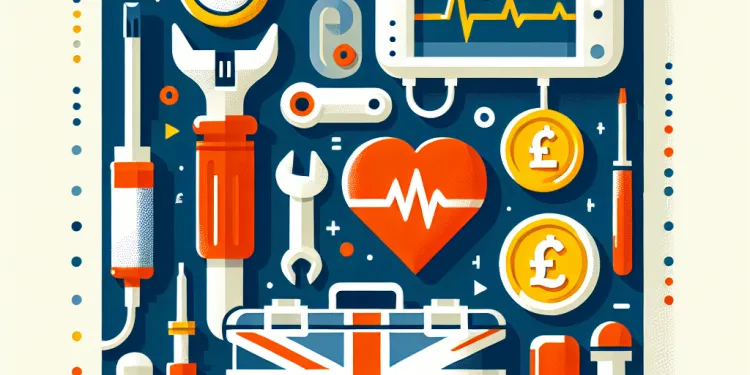
Find A Professional
More Items From Ergsy search
-
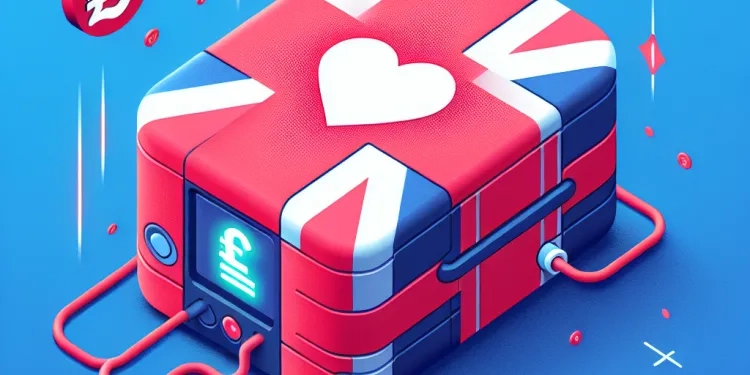
What is the role of a defibrillator in CPR?
Relevance: 100%
-
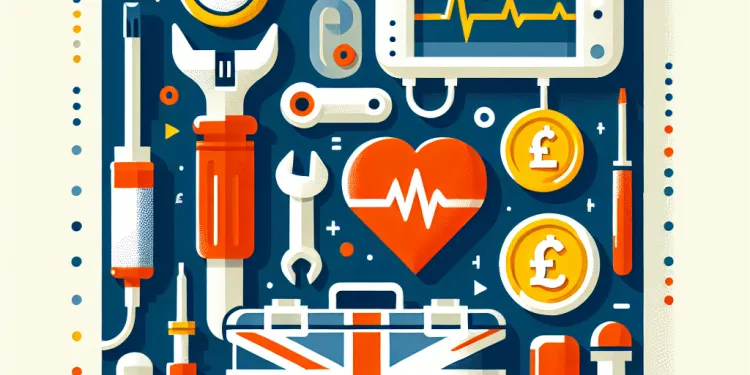
What maintenance do defibrillators require?
Relevance: 90%
-
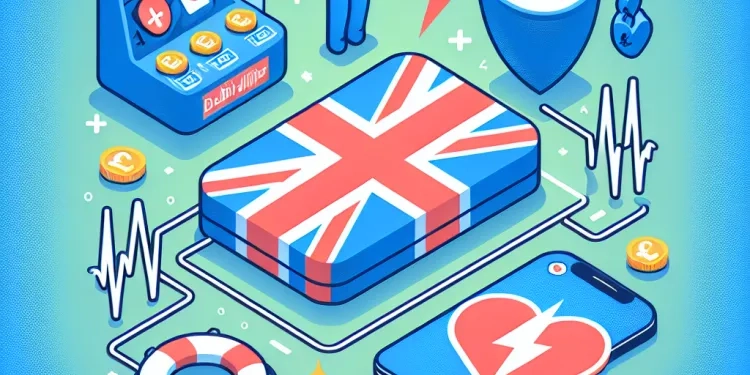
How long do defibrillator batteries last?
Relevance: 87%
-
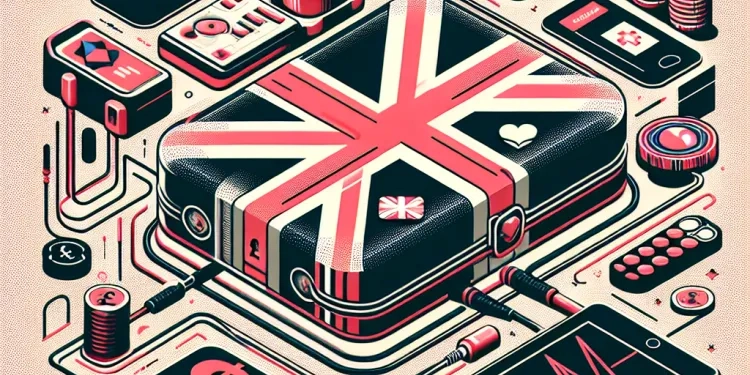
How effective are defibrillators?
Relevance: 82%
-
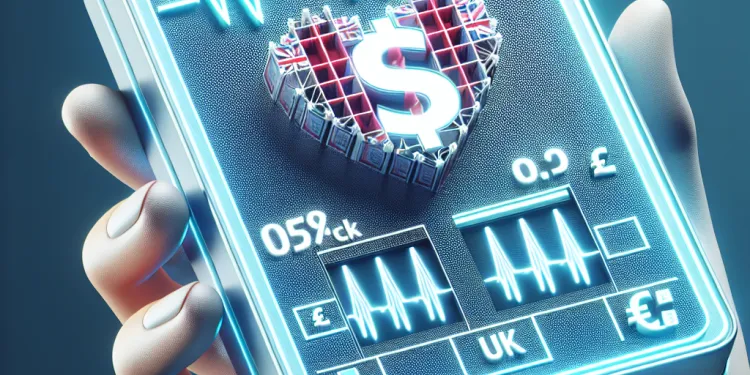
What is a defibrillator?
Relevance: 79%
-

What role does technology play in infrastructure maintenance?
Relevance: 78%
-
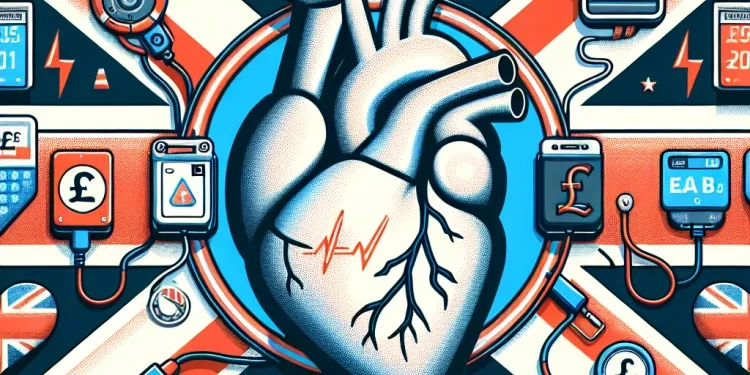
Can a defibrillator restart a stopped heart?
Relevance: 77%
-
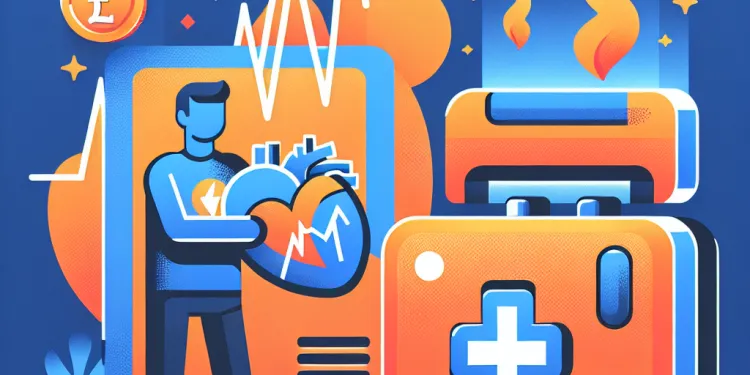
What is a Defibrallator?
Relevance: 71%
-
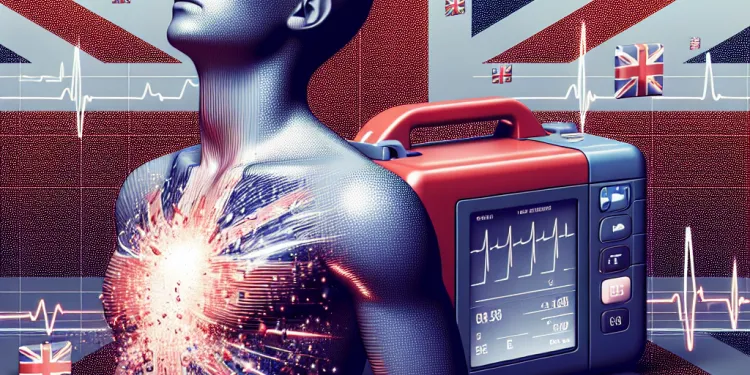
Can you use a defibrillator on a wet person?
Relevance: 69%
-
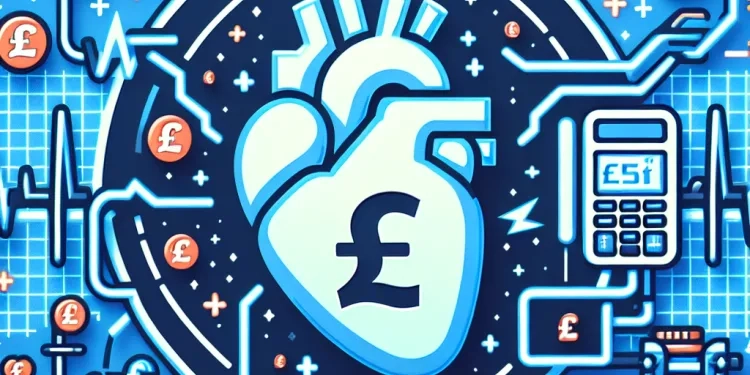
How do you know if a defibrillator is required?
Relevance: 67%
-
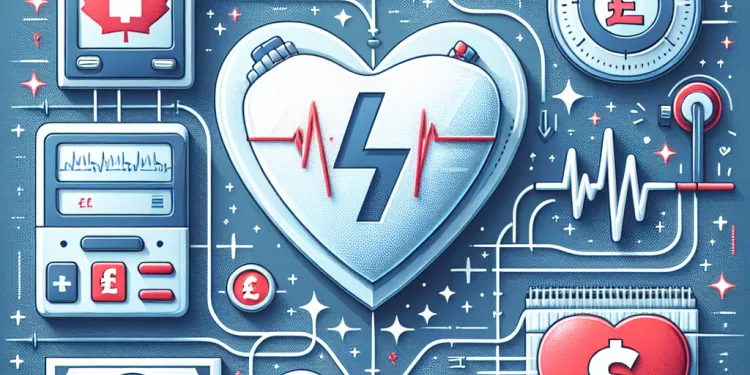
How does a defibrillator work?
Relevance: 66%
-
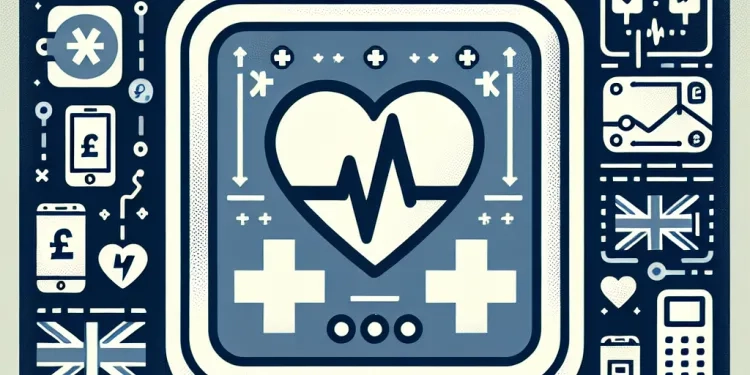
What are the different types of defibrillators?
Relevance: 64%
-
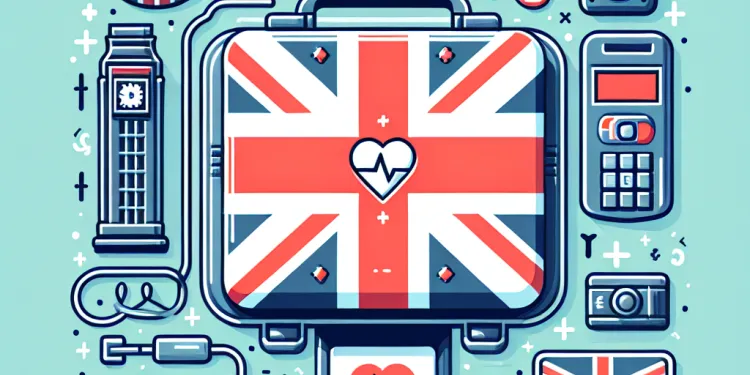
Do defibrillators have any side effects?
Relevance: 63%
-
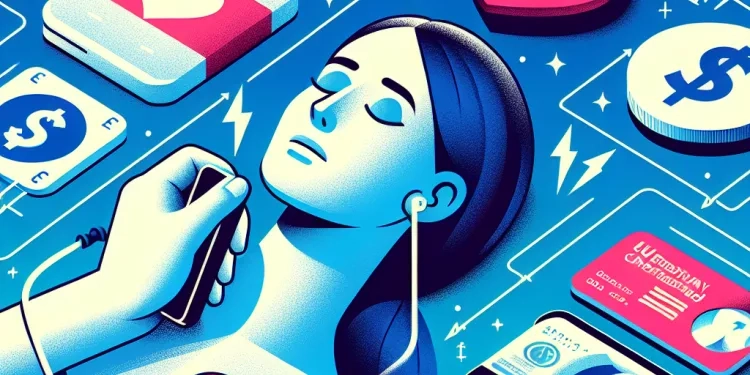
Who can use a defibrillator?
Relevance: 61%
-

What does water infrastructure maintenance involve?
Relevance: 60%
-
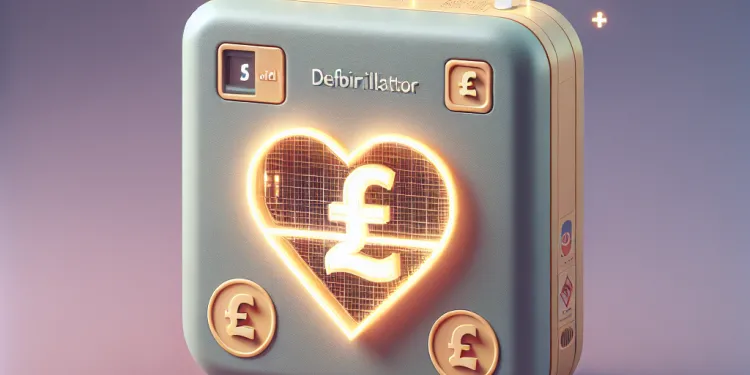
Can defibrillators be used on children?
Relevance: 58%
-
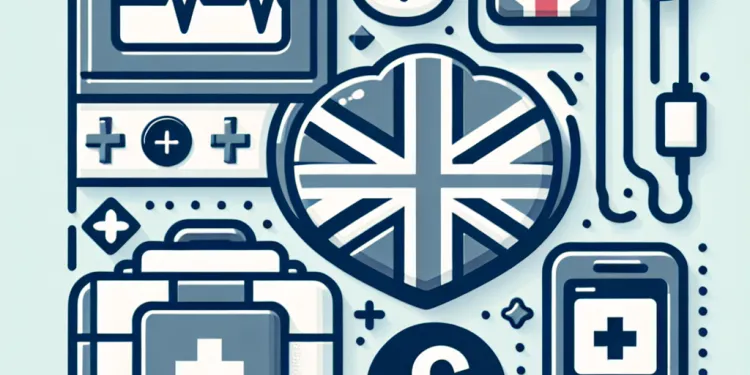
What should you do if a defibrillator is needed?
Relevance: 55%
-
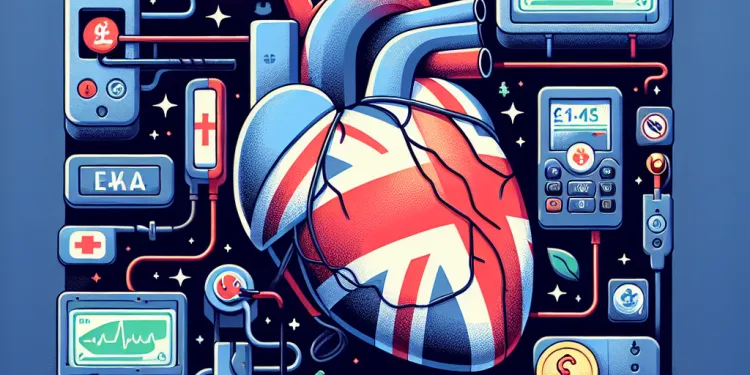
Why are defibrillators important?
Relevance: 46%
-
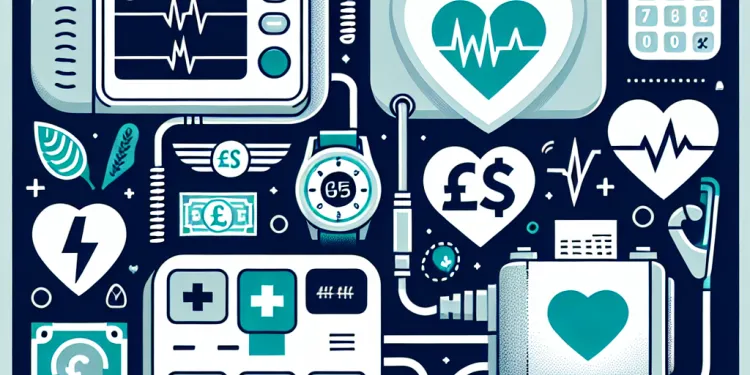
Is it safe to use a defibrillator on someone with a pacemaker?
Relevance: 38%
-

How does climate change affect water infrastructure maintenance?
Relevance: 31%
-

Why is infrastructure maintenance important?
Relevance: 27%
-

Navigating Changes in Family Law Post-Brexit
Relevance: 26%
-

Does screen time affect both sleep onset and sleep maintenance?
Relevance: 26%
-
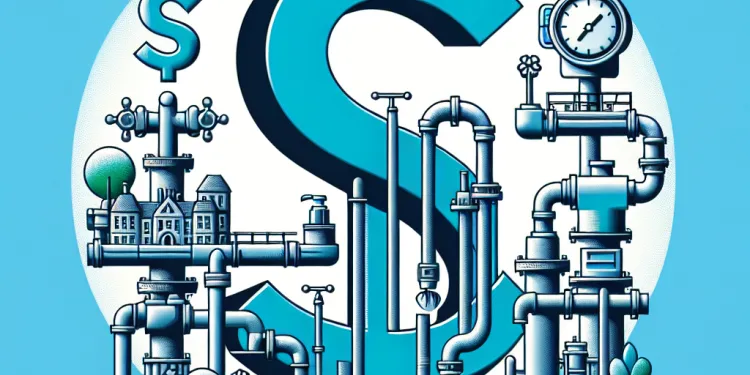
Are there penalties for not maintaining water infrastructure?
Relevance: 21%
-

Are water companies responsible for maintaining water infrastructure in the UK?
Relevance: 20%
-
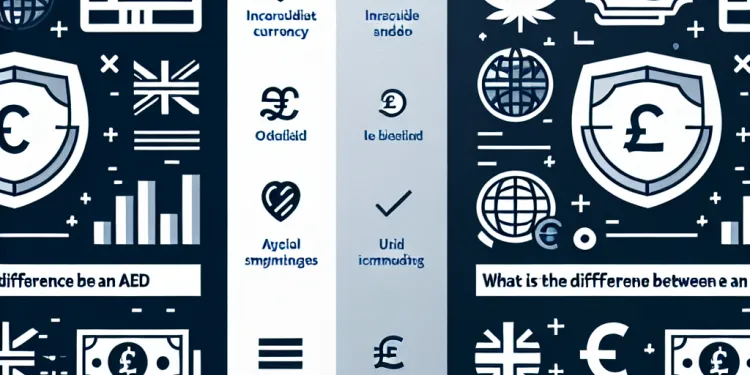
What is the difference between an AED and an ICD?
Relevance: 16%
-

What challenges do water companies face in maintaining infrastructure?
Relevance: 15%
-
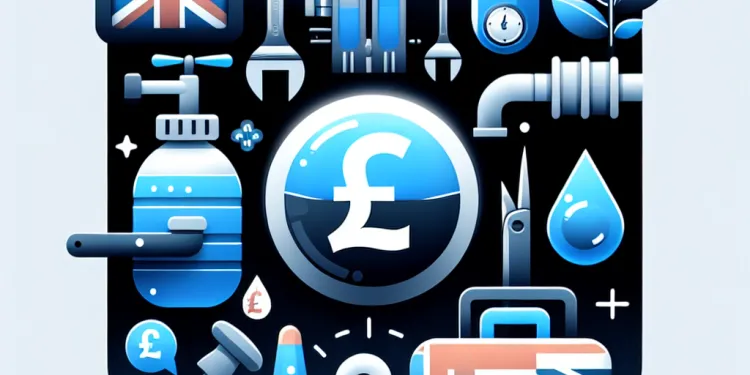
How are water companies held accountable for infrastructure maintenance?
Relevance: 15%
-

Are water companies responsible to maintain and update infrastructure in the UK?
Relevance: 15%
-

Why are council burial fees going up nearly 50% in the UK?
Relevance: 15%
-

Divorce UK: What happens with the money in a divorce?
Relevance: 14%
-

UNDERSTANDING YOUR STUDENT LOAN: A GUIDE FOR ENGLISH STUDENTS STARTING AN UNDERGRADUATE COURSE 2023
Relevance: 13%
-

How often should I see a chiropractor?
Relevance: 13%
-
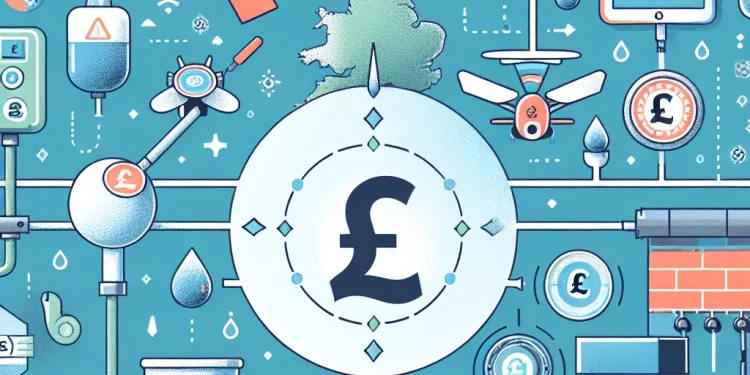
How are new technologies helping to reduce water loss in the UK?
Relevance: 11%
-

Understanding Your Rights in Divorce Proceedings
Relevance: 11%
-

Navigating Post-Brexit Family Law Changes
Relevance: 11%
-
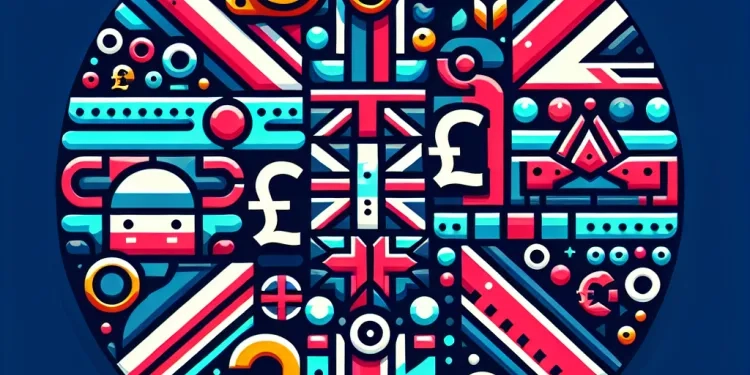
What is an AED?
Relevance: 10%
-

Do all banks have the same fee structures?
Relevance: 9%
-
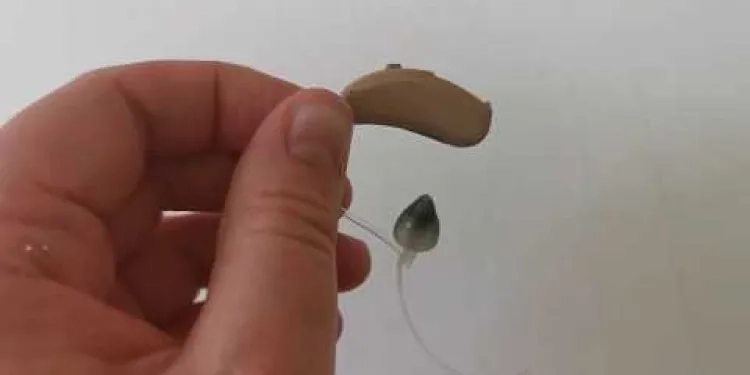
How to clean your hearing aid
Relevance: 8%
-
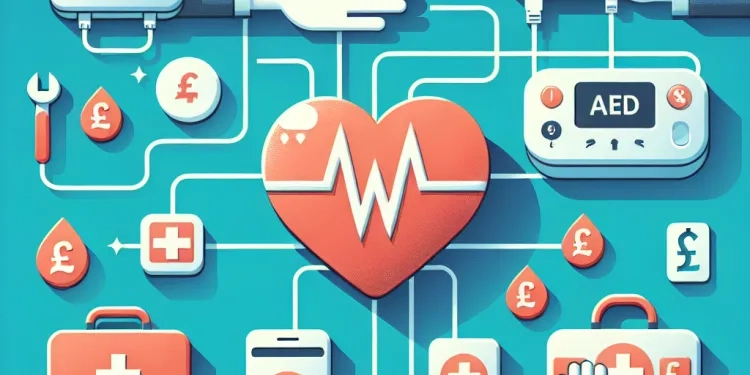
Is training required to use an AED?
Relevance: 8%
Introduction to Defibrillator Maintenance
Defibrillators are vital life-saving devices used to deliver a dose of electric current to the heart in cases of life-threatening cardiac arrhythmias. Ensuring that these devices are functioning correctly is crucial, as any malfunction can have severe consequences. In the UK, there are guidelines and best practices for maintaining defibrillators, whether they are installed in public places or used by healthcare professionals.
Regular Inspection
Regular inspection is a fundamental part of defibrillator maintenance. It is recommended that the device be visually inspected at least once a month. The inspection should check for any signs of physical damage, ensure all components are present, and confirm that the defibrillator is clean and free from dust and moisture. Many defibrillators are equipped with self-testing and status indicators to help with routine inspections. However, manual checks are still essential to identify any issues the self-tests might miss.
Battery Checks
The battery is a critical component of a defibrillator. It is important to regularly check the battery's status to ensure it has sufficient charge to operate effectively in an emergency. Most modern defibrillators have a battery status indicator, and some perform automatic self-tests to check battery levels. Batteries generally need replacing every two to five years, but this can depend on the specific model and how often the device is used. It is crucial to have a replacement battery readily available in case of failure.
Electrode Pad Replacement
Electrode pads are essential for delivering the electrical shock from a defibrillator. These pads have a shelf life, usually between 18 and 24 months. As such, they need to be replaced when they reach their expiry date or if they are used. Expiring or already used pads can inhibit the device's effectiveness and potentially harm the patient, so regular checks and timely replacement are necessary.
Software Updates and Calibration
Many modern defibrillators come with software components that may require regular updates and calibration. Keeping the software up-to-date is essential for ensuring the device's reliability and efficiency. Manufacturers often provide guidance on how and when to perform software updates. Calibration might be needed to ensure that the defibrillator's readings are accurate, depending on the manufacturer's instructions and device specifications.
Compliance with Legal and Safety Standards
In addition to routine maintenance, defibrillators must comply with UK legal and safety standards. This compliance often requires maintaining detailed maintenance records, conducting periodic checks by qualified personnel, and ensuring that staff are trained in using and maintaining the device. Proper documentation is critical, as it helps demonstrate compliance with regulations and ensures accountability in case of an emergency.
Conclusion
Maintaining defibrillators is a crucial responsibility that involves regular inspections, battery and electrode pad checks, software updates, and compliance with legal standards. By following these maintenance practices, organisations and individuals in the UK can ensure that their defibrillators are always ready to save lives when needed.
Introduction to Defibrillator Maintenance
Defibrillators are very important machines that can save someone's life. They give an electric current to the heart if it is not working properly. It is really important to make sure these machines work well. This is because if they do not work, people can be in danger. In the UK, there are rules for taking care of defibrillators. These rules are for devices in public places or used by healthcare workers.
Regular Inspection
Checking defibrillators often is very important. You should look at them at least once a month. When you check the defibrillator, look for any damage, make sure all parts are there, and see that it is clean and dry. Many defibrillators have tests inside them that help check if they are working. But, it is still important to check them yourself to catch any problems the machine might miss.
Battery Checks
The battery in a defibrillator is very important. You need to check that it has enough power to work in an emergency. Many new defibrillators show you if the battery is okay, and some can test it by themselves. Batteries usually need changing every two to five years. This depends on the defibrillator and how much it is used. Always have a new battery ready in case the old one stops working.
Electrode Pad Replacement
Electrode pads are needed for giving the electric shock from a defibrillator. These pads do not last forever. They usually need to be changed every 18 to 24 months. You should replace them when they get too old or after they are used once. If pads are old or already used, they might not work well and could harm the patient, so it is important to change them regularly.
Software Updates and Calibration
Many new defibrillators have software that might need updating regularly. Keeping this software up-to-date is important to ensure the defibrillator works well. The manufacturer will tell you how and when to update the software. Calibration is sometimes needed to ensure the defibrillator gives the right information, based on the company's instructions.
Compliance with Legal and Safety Standards
Defibrillators need to follow UK laws and safety rules, as well as regular maintenance. This means you need to keep records of all the checks and have them looked at by trained people. It is also important to make sure that people know how to use and take care of the machines. Writing everything down helps show that you are following the rules and are ready for emergencies.
Conclusion
Taking care of defibrillators is important. It involves regular checks, looking after batteries and pads, updating software, and following the law. By doing these things, people and organisations in the UK can make sure their defibrillators are ready to save lives.
Frequently Asked Questions
What is the importance of defibrillator maintenance?
Regular maintenance of defibrillators ensures they are functioning properly and are ready for use in an emergency.
How often should defibrillators be inspected?
Defibrillators should be inspected regularly, typically on a monthly basis, but follow the manufacturer's guidelines for specific recommendations.
Who should perform defibrillator maintenance?
Maintenance should be performed by trained personnel or a qualified service provider familiar with the specific model of defibrillator.
What components of a defibrillator require regular checks?
Battery levels, electrode pads, cables, and overall device integrity should be checked regularly.
How are defibrillator battery levels checked?
Battery levels can be checked via the device's self-test feature or manually, depending on the model's instructions.
What should be done if the defibrillator's battery is low?
If the battery is low, it should be replaced immediately to ensure the device is ready for use.
How often should defibrillator batteries be replaced?
Battery replacement frequency depends on the manufacturer's guidelines but typically every 2-5 years or after use.
What maintenance is required for the electrode pads?
Electrode pads should be checked for expiry dates, intact packaging, and replaced if expired or damaged.
How are the defibrillator's self-tests utilized?
Most modern defibrillators have an automatic self-test feature that checks the device's functionality. This should be activated regularly.
What should be documented during defibrillator maintenance checks?
Documentation should include date of check, any issues found, actions taken, and who performed the inspection.
How can you ensure defibrillators are ready for an emergency?
Ensure routine checks are up-to-date, batteries and pads are replaced as needed, and all parts are free of damage.
What environmental conditions can affect a defibrillator?
Extreme temperatures, humidity, and dust can affect a defibrillator's performance, so they should be stored accordingly.
How should defibrillators be stored for optimal performance?
They should be stored in a temperature-controlled environment, away from dust and moisture, and easily accessible.
What role do service contracts play in defibrillator maintenance?
Service contracts can provide regular maintenance and inspection by qualified professionals, ensuring the device's reliability.
What happens during a defibrillator's professional maintenance visit?
A professional will thoroughly inspect, test, and, if necessary, repair or replace parts of the defibrillator.
How can you check the defibrillator's software is up to date?
Consult the manufacturer's guidelines for software update protocols or have a professional service provider perform updates.
Why is it important to register a defibrillator with the manufacturer?
Registration ensures you receive updates, safety notices, and recalls from the manufacturer.
What should be done if a defibrillator fails an inspection?
If a defibrillator fails inspection, it should be removed from service, repaired, or replaced immediately.
How can technology aid in defibrillator maintenance?
Some defibrillators can be connected to monitoring systems that provide alerts for maintenance or issues.
What should you do if the defibrillator malfunctions during a self-test?
Contact a service provider or the manufacturer for troubleshooting and repair immediately if a malfunction is detected.
Why is it important to take care of a defibrillator?
A defibrillator is a machine that helps if someone’s heart stops beating. It's very important to make sure the defibrillator works well.
Here’s why taking care of it is important:
- Ready to use: If you keep it in good shape, it will be ready to help in an emergency.
- Safe to use: Regular checks mean it is safe and can work properly.
To help you remember to check it, you can:
- Use a checklist to make sure everything is working.
- Set a reminder to check it regularly.
Taking care of the defibrillator can help save lives.
Taking care of defibrillators is important. It helps make sure they work well and are ready if someone needs help in an emergency.
How often should defibrillators be checked?
A defibrillator is a machine that helps when someone's heart stops. It is very important to make sure the defibrillator works well.
You should check defibrillators:
- Once every month
- Or if the machine says it needs a check
To help you remember, use a calendar or phone reminders to note down the check-up days.
Always follow the instructions that come with the defibrillator. They tell you what to do.
Check defibrillators often, usually once a month. Always look at the manufacturer's instructions for more advice.
Who should take care of the defibrillator?
Only trained people or special helpers should check and fix the defibrillator. They need to know how this machine works.
What parts of a defibrillator need regular checks?
A defibrillator is a machine that helps restart a person's heart. It has many parts that need to be checked to make sure it works well.
- Batteries: The defibrillator needs good batteries. Make sure the batteries are not old or weak.
- Pads: Check the sticky pads. They need to be clean and fresh. If they are dry or old, they won’t work right.
- Wires: Look at the wires to see if they are broken or damaged.
- Screen: Make sure the screen turns on and shows the right information.
Regular checks help make sure the defibrillator is ready to use in an emergency.
Helpful Tip: Use a checklist to remember what to check. You can also use a calendar to remind you when to check the defibrillator next time.
It is important to check some things often: the battery power, the sticky pads, the wires, and to make sure the whole device is working well.
How do you check if a defibrillator battery is full?
You can check how much battery is left by using the device's self-test feature. This is like a special button or tool on your device. You can also check it yourself by looking at the instructions for your device model.
What to do if the defibrillator's battery is low?
A defibrillator is a machine that helps when someone's heart stops.
If the battery is low, the machine might not work.
Here’s what you should do:
- Tell someone who knows about it. They can help fix it.
- Find a new battery and put it in if you can.
- Look at the guide or manual for help.
- Use pictures or videos to help understand what to do.
It’s important the defibrillator is always ready to use.
If the battery is low, change it right away. This keeps the device ready to use.
When do we need to change defibrillator batteries?
Batteries need to be changed every 2 to 5 years. Check what the maker of the battery says. You might need to change them sooner if you use them a lot.
How do you take care of the electrode pads?
Check the electrode pads to make sure they are not out of date. Look at the package to see if it is sealed and not ripped. If the pads are old or the package is broken, get new ones.
How does the defibrillator check if it works?
Most new defibrillators can check if they are working by themselves. They do this with a special test. This test should happen often.
What should you write down when checking a defibrillator?
Write down the date you checked. Say if you found any problems. Write what you did about the problems. Say who checked everything.
How to make sure defibrillators are ready to use?
Defibrillators are machines that help when someone's heart stops.
To make sure they work:
- Check the battery is full.
- Look at the pads. Are they sticky and not too old?
- Keep it in a place that's easy to find.
Ask someone who knows a lot about defibrillators to help if you're unsure. It's good to have a guide or a talk with an expert.
Check that everything is working well. Make sure the batteries and pads are changed when needed. Look for any broken parts and fix them.
What things in the environment can change how a defibrillator works?
Very hot, very cold, wet air, and dust can stop a heart machine working well. Keep it in the right place to make sure it works.
How to Keep a Defibrillator Working Well
A defibrillator is a machine that helps when someone's heart stops. It can save lives. Here is how to look after it:
1. **Keep Dry and Clean:** Make sure the defibrillator is in a clean and dry place. Water or dirt can damage it.
2. **Check Often:** Look at the defibrillator regularly. Make sure it is not broken and the batteries work.
3. **Read the Instructions:** The defibrillator comes with a guide. Read it to understand how to keep it safe.
4. **Easy to Reach:** Put the defibrillator where people can get to it quickly in an emergency.
Using these tips can help keep the defibrillator ready to use and in good condition. It's important for it to work well when needed.
Keep them in a cool, clean place where it’s not too hot or too cold. Make sure there is no dust or wetness. Make sure you can get to them easily when you need them.
How do service contracts help take care of defibrillators?
Service contracts are agreements that help keep defibrillators working well.
They make sure that the defibrillator is checked and fixed if needed.
It's like having a team that makes sure things work right, so you can trust the defibrillator to help people.
To understand better, you could use pictures or videos that show how a defibrillator works.
Talk to someone you trust if you have questions. They can help you learn more.
Service contracts can help you. They give you regular check-ups by experts to keep your device working well.
What happens when a defibrillator is checked by a professional?
A defibrillator is a machine that helps restart a person's heart. It needs to work well. So, it is important to have it checked by a professional.
Here is what happens during the check:
- The professional looks at the defibrillator to make sure it is not broken.
- They check the batteries to see if they are full.
- They push buttons to ensure everything works properly.
- They look for any problems and fix them.
If needed, the professional can explain everything they are doing. They might also use pictures or diagrams to help you understand better.
After the check, the defibrillator will be ready to help if someone needs it.
A trained person will look closely at the defibrillator. They will check it, test it, and fix it if it needs fixing. If any parts are broken, they will change them.
How can you see if the defibrillator's software is the newest?
Here's how to check:
- Look at the screen: It might tell you if it needs an update.
- Check the manual: The book that comes with it can help.
- Ask someone for help: A technician or someone who knows about defibrillators.
- Use a computer: Some defibrillators can connect to a computer to check for updates.
Tools to help you:
- Manual: Booklet or instructions that came with the defibrillator.
- Tech support: Someone who fixes or knows technology.
Check the instructions from the company that made the software to see how to update it. You can also ask a professional to help you update it.
Why should you tell the maker about your defibrillator?
It is important to let the company that made your defibrillator know you have it. This helps if there are updates or news you need to know about. You can do this by registering your defibrillator with them.
Here are some tips to help:
- Ask someone you trust to help you register.
- Use picture guides or videos if you get stuck.
Signing up helps you get news, safety messages, and fixes from the maker.
What to do if a defibrillator does not pass a check?
If a defibrillator does not pass its check, it should be taken away, fixed, or swapped right away.
How can technology help take care of defibrillators?
Technology can help us look after defibrillators. It can remind us to check the batteries and other important parts. It can also send alerts if something is wrong, so we can fix it quickly. Using apps and smart devices can make it easier to keep defibrillators in good condition.
Tools like step-by-step videos or talking guides can also help people learn how to take care of defibrillators. This way, everyone can feel confident when checking or using them.
Some defibrillators can be hooked up to special systems. These systems tell us if the defibrillator needs fixing or if there is a problem.
What to Do if a Heart Machine Doesn't Work?
If a heart machine (defibrillator) is not working properly during its self-check, here's what you can do: 1. **Read the Manual**: Look at the instructions to see what might be wrong. 2. **Ask for Help**: Tell someone in charge, like a teacher or a supervisor. 3. **Fix or Replace**: Ask for someone to fix it or get a new one. **Tools & Tips**: - Use simple pictures to show steps. - Use a checklist to make sure you understand the steps.If something is not working right, ask for help. Call the company who made it or the people who take care of it. They can fix it for you.
Useful Links
- Ergsy carfully checks the information in the videos we provide here.
- Videos shown by Youtube after a video has completed, have NOT been reviewed by ERGSY.
- To view, click the arrow in centre of video.
- Most of the videos you find here will have subtitles and/or closed captions available.
- You may need to turn these on, and choose your preferred language.
- Go to the video you'd like to watch.
- If closed captions (CC) are available, settings will be visible on the bottom right of the video player.
- To turn on Captions, click settings .
- To turn off Captions, click settings again.
More Items From Ergsy search
-

What is the role of a defibrillator in CPR?
Relevance: 100%
-

What maintenance do defibrillators require?
Relevance: 90%
-

How long do defibrillator batteries last?
Relevance: 87%
-

How effective are defibrillators?
Relevance: 82%
-

What is a defibrillator?
Relevance: 79%
-

What role does technology play in infrastructure maintenance?
Relevance: 78%
-

Can a defibrillator restart a stopped heart?
Relevance: 77%
-

What is a Defibrallator?
Relevance: 71%
-

Can you use a defibrillator on a wet person?
Relevance: 69%
-

How do you know if a defibrillator is required?
Relevance: 67%
-

How does a defibrillator work?
Relevance: 66%
-

What are the different types of defibrillators?
Relevance: 64%
-

Do defibrillators have any side effects?
Relevance: 63%
-

Who can use a defibrillator?
Relevance: 61%
-

What does water infrastructure maintenance involve?
Relevance: 60%
-

Can defibrillators be used on children?
Relevance: 58%
-

What should you do if a defibrillator is needed?
Relevance: 55%
-

Why are defibrillators important?
Relevance: 46%
-

Is it safe to use a defibrillator on someone with a pacemaker?
Relevance: 38%
-

How does climate change affect water infrastructure maintenance?
Relevance: 31%
-

Why is infrastructure maintenance important?
Relevance: 27%
-

Navigating Changes in Family Law Post-Brexit
Relevance: 26%
-

Does screen time affect both sleep onset and sleep maintenance?
Relevance: 26%
-

Are there penalties for not maintaining water infrastructure?
Relevance: 21%
-

Are water companies responsible for maintaining water infrastructure in the UK?
Relevance: 20%
-

What is the difference between an AED and an ICD?
Relevance: 16%
-

What challenges do water companies face in maintaining infrastructure?
Relevance: 15%
-

How are water companies held accountable for infrastructure maintenance?
Relevance: 15%
-

Are water companies responsible to maintain and update infrastructure in the UK?
Relevance: 15%
-

Why are council burial fees going up nearly 50% in the UK?
Relevance: 15%
-

Divorce UK: What happens with the money in a divorce?
Relevance: 14%
-

UNDERSTANDING YOUR STUDENT LOAN: A GUIDE FOR ENGLISH STUDENTS STARTING AN UNDERGRADUATE COURSE 2023
Relevance: 13%
-

How often should I see a chiropractor?
Relevance: 13%
-

How are new technologies helping to reduce water loss in the UK?
Relevance: 11%
-

Understanding Your Rights in Divorce Proceedings
Relevance: 11%
-

Navigating Post-Brexit Family Law Changes
Relevance: 11%
-

What is an AED?
Relevance: 10%
-

Do all banks have the same fee structures?
Relevance: 9%
-

How to clean your hearing aid
Relevance: 8%
-

Is training required to use an AED?
Relevance: 8%